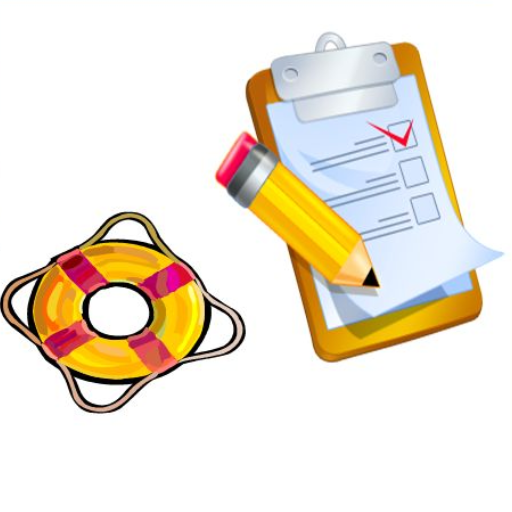
Concern for personal safety is essential for one’s health during day-to-day activities and while handling emergencies. A good safety plan is proactive, clearly outlining steps that work to relieve specific risks. This blog post seeks to provide a competent guideline for formulating an effective personal safety plan by outlining some valuable tips and guidelines. This framework is curated to help every person secure themself and others against a wide array of threats by identifying forms of communication alongside the essential resources that would be necessary. Whether preparing for disaster scenarios such as natural catastrophes, worries about securing oneself, or any other emergencies, this blog post seeks to provide aid to become more self-sufficient, as always, with tips and actionable steps.
What is a Safety Plan, and Why Do You Need It?

A safety plan anticipates danger and defines the action to take in any dangerous situation. It is an effective tool to improve safety, lessen risk, or be ready for the unexpected. Instead, the plan of action is a preemptive move taken to cushion a safety plan so that it is not active after the threat has occurred. A safety plan is necessary due to a lack of predictability in an emergency as it puts an individual in a position to act quickly, which reduces the gap between panic and unclarity. A well-thought-out strategy tends to be risky at times.
Understanding the Basics of a Safety Plan
A safety plan is developed to manage all forms of emergencies that arise in an organization. A safety plan should contain all critical aspects of potential accidents – for example, identifying contacts relevant to a particular emergency, evacuation procedures, and other actions that need to be taken for different situations. The first step in developing an organization-wide safety plan is to conduct a risk assessment to identify potential associated threats. The next step is to give the roles that need to be filled and ensure that every participant understands his or her role.
Effective safety plans provide access to necessary equipment, including but not limited to first aid kits, communication devices, important documents, etc. During a severe emergency, having notice protocols such as primary and secondary means of communication helps keep coordination among team members intact. Mock drills and training sessions are essential activities that should be conducted to ensure that people are prepared and can reveal any shortcomings in the plan. A safety plan in an organization should constantly be updated to contain any new risks, information from past emergencies, and changes to the environment while remaining pertinent and valuable.
Key Elements of an Effective Plan
- Risk Assessment
- Identify and evaluate potential hazards specific to the environment or operation.
- A risk matrix will be used to classify threats by likelihood and impact for prioritization.
- Incorporate environmental, human, and technical factors into the analysis.
- Defined Roles and Responsibilities
- Assign specific tasks to individuals or teams based on expertise and capabilities.
- Ensure clear documentation of roles and establish accountability measures.
- Conduct regular briefings to reinforce understanding and compliance.
- Emergency Supplies and Resources
- Maintain an inventory of critical supplies, such as medical kits, non-perishable food, water, and power sources.
- Verify the availability of communication devices (e.g., radios, satellite phones) and ensure proper functionality.
- Store essential documents, like contact lists and evacuation routes, in inaccessible, protected locations.
- Communication Protocols
- Establish a primary method of communication (e.g., mobile network) with a secondary backup (e.g., satellite communication).
- Develop standardized messaging procedures to avoid confusion during emergencies.
- Designate a communication officer to manage the flow of information.
- Regular Drills and Training
- Conduct drills at least semi-annually to simulate various emergency scenarios.
- Evaluate participant performance and identify weaknesses in execution.
- Update training materials and retrain individuals as needed to align with updated protocols.
- Dynamic Plan Updates
- Review the plan periodically, preferably quarterly, or after significant incidents.
- Adjust for new hazards, technological advancements, or changes in operational scope.
- Incorporate lessons learned from real-life emergencies to refine strategies and increase effectiveness.
An effective safety plan can minimize risks and enhance preparedness for any unforeseen situation by addressing these elements with precision and regular oversight.
How a Safety Plan Can Improve Your Security
A well-constructed safety plan significantly enhances security by providing a structured approach to identify, assess, and mitigate risks. From my experience, having a clear plan ensures that all team members understand their roles and responsibilities during emergencies, reducing confusion and response times. Key technical parameters to consider include:
- Risk Assessment Frameworks
- Regular risk analysis methodologies, such as SWOT or PESTLE, can evaluate vulnerabilities effectively.
- Redundancy in Communication Systems
- Implement backup systems (e.g., satellite phones, redundant network infrastructure).
- Response Time Benchmarks
- Define acceptable response times (e.g., 30 minutes for containment, 1 hour for resolution).
By embedding these parameters into the plan, you'll ensure a proactive stance against potential threats and build resilience within your operational framework.
How to Create a Safety Plan in Simple Steps?
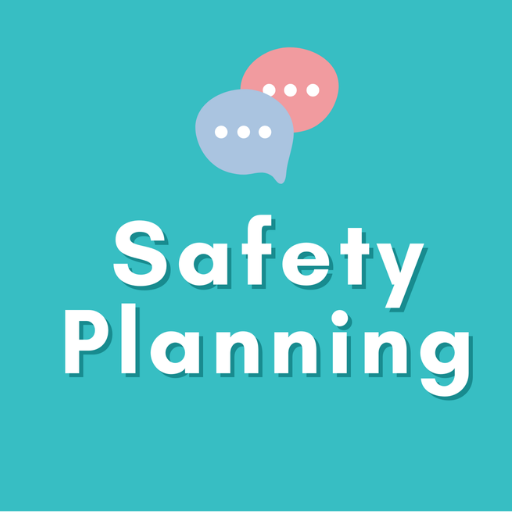
Step 1: Identify Potential Risks
Start by carrying out a thorough risk assessment to identify risks that threats could pose. Take advantage of structured methodologies like SWOT or PESTLE to evaluate internal and external flaws in your operation.
Step 2: Establish Clear Objectives
Establish safety plan goals, like protecting employees, reducing financial loss, and maintaining business continuity during crises and its intended objectives.
Step 3: Assign Roles and Responsibilities
Each team member should be well versed in emergency protocols and scenarios so their roles are well guided by the responsibilities outlined in their specific outlines. This diminishes confusion and increases coordination.
Step 4: Develop Mitigation Strategies
Detailed strategies to address any outlined risks should be formulated. These could include integrating redundant communication channels, conducting seminars for training, or increasing physical security measures.
Step 5: Define Emergency Protocols
Establish emergency procedures, such as containment, evacuation, wait-and-notify, and other necessary processes. Ensure the protocols created correspond to the known response time targets.
Step 6: Test and Update the Plan Regularly
Implement new strategies to complement the changes made during the week. Schedule drills regularly and examine the safety plan to analyze lessons learned that can fill the gaps. Shift up the schedule as new risks arise or operational conditions alter.
Following this guide will help you formulate a strengthened safety plan that will boost your team's performance during relevant critical periods.
First Step: Assessing Your Safety
Aspects like structural risks, building access points, and even the location of the building play a role in my assessment. It is also crucial to evaluate the misplaced positions of smoke detectors, fire extinguishers, and insufficient lighting. I check whether there are enough smoke detectors and functional fire extinguishers.
Technical Parameters to Consider:
- Smoke detectors should function compatibly with UL 217 and also with EN 14604.
- Ensure that the fire extinguishers have certain classifications, such as ABC and CO2, specific to certain types of fires and have been inspected for annual renewal.
- Following OSHA guidelines, lighting in vital areas such as hallways and emergency exits should be maintained at least at 100 lux.
- Daily doors should utilize ANSI/BHMA Grade I locks to increase security against forced intrusion.
These regulations and others ensure that my personal safety measures are comprehensive and up-to-date.
Developing Practical Strategies for Safety
When developing practical strategies for safety, it is essential to adopt a structured approach that incorporates proven methods and reliable technical standards. Below are concise answers and practical solutions based on detailed research:
- Assessing Structural and Environmental Hazards
Inspect your environment thoroughly to identify structural vulnerabilities such as weak foundations, cracks, or unstable elements. Verify the adequacy of protections against natural disasters, including reinforced walls for earthquake resilience or storm shutters for areas prone to hurricanes. Additionally, ensure pathways remain unobstructed for swift evacuation.
Technical Parameters:
- Structural Reinforcements: Comply with the International Building Code (IBC) for seismic zones.
- Pathway Widths: Maintain a minimum width of 1.2 meters (48 inches) for exit routes, per NFPA 101 standards.
- Establishing Reliable Fire Safety Measures
Fire preparedness remains critical. Confirm that smoke detectors are installed on every floor and near sleeping areas, and test them monthly. Use multi-purpose fire extinguishers (ABC-rated) and educate household members on their proper usage. Create a fire escape plan including two exits per room and practice drills at least twice annually.
Technical Parameters:
- Smoke Detector Placement: Follow NFPA 72 standards, ensuring units are no more than 10 feet from cooking appliances.
- Fire Extinguisher Maintenance: Perform regular inspections and maintain equipment certifications per NFPA 10.
- Enhancing Home Security
Reinforce entry points with high-quality locks, robust door frames, and security cameras. Install motion-sensitive lighting and consider smart home systems for real-time alerts—additionally, trim landscaping to eliminate blind spots near windows and doors.
Technical Parameters:
- Door Locks: Use ANSI/BHMA Grade 1 deadbolts for maximum durability.
- Camera Resolution: For precise monitoring, opt for IP cameras with a minimum resolution of 1080p and night vision capabilities.
- Outdoor Lighting: Ensure fixtures provide a minimum output of 500 lumens for enhanced visibility.
- Improving Emergency Preparedness
Maintain a well-stocked emergency kit, including first-aid supplies, water, non-perishable food, flashlights, and backups for essential medications. Secure critical documents in waterproof and fireproof storage. Ensure all household members are trained on basic first aid and emergency response protocols.
Technical Parameters:
- Emergency Kits: FEMA recommends storing at least one gallon of water per person daily for three days.
- Storage Safety: Use safes that meet UL 72 fire resistance standards.
By meticulously implementing these strategies and adhering to technical parameters, you can create an environment optimized for personal and collective safety. Regular reviews and updates to these measures further ensure sustained effectiveness.
Ensuring Your Plan is Ready for an Emergency
I keep my emergency plan active by revising and updating it regularly. This includes checking that all emergency supplies, such as perishables and medicines, are in stock. I also ensure that my communication plans are proactive and current, including checking all family members' phone numbers and contact information. Furthermore, I regularly carry out practice drills to ensure everyone knows what to do and can respond appropriately and promptly.
- Water Supply: Maintain an estimate of one gallon for each person per day for three days based on the suggestions from FEMA's Technical Guidelines.
- Food Storage: Ensure everyone has at least three days’ worth of non-perishable food and a shelf life between 6 and 12 months.
- Communication Equipment: Have a battery-powered or hand-cranked radio that receives NOAA weather alerts.
- Medications: At a minimum, guard seven days' worth of essential prescription medication and never let them expire on rotation before use.
While having a valid, helpful emergency plan is effective, adhering to the technical parameters and consistently updating the plan ensures that the household is well prepared.
What to Do in an Emergency Situation?
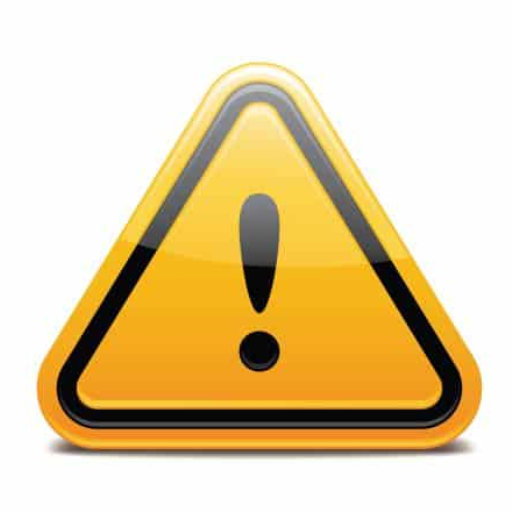
- Evaluate the Circumstances: Evaluate the immediate dangers yet remain as calm as possible. Depending on the situation, decide whether it is better to evacuate or stay sheltered. There is no need to panic; take a moment to analyze the environment, potentially prioritizing which matters should grab most of your attention.
- Ensure Safety: Check for any injuries whatsoever for all members of the household. If any first-aid is needed, administer it, otherwise for more serious cases ensure that you call for medical assistance. Always try to give medication wherever it is possible.
- Follow Established Plans: Proceed with engaging the emergency plan, ensuring everyone knows their respective roles. It, for example, could be a simple plan of splitting the household into different teams of people where everyone will have their tasks assigned to them.
- Monitor Communications: Always monitor different communication channels. Nonetheless, a hand crank radio is the best way and most important during alerts and emergencies. You must ensure that the device is functional and reliable, then proceed to check for updates from sources such as NOA A, for they usually contain updated news on, or if you are lucky, the local officials will be speaking in your area and so got that covered.
- Remain Collected and Empathetic: Start supporting the household, mainly children. Be kind and gently confident while making decisions and reducing chaos where needed.
If executed with attention and in the order provided above, it would address problems residents may face whenever there is an emergency or an event that creates panic in the household about an issue that is more significant than they were ready to tackle.
Identifying Immediate Danger and Taking Action
During emergencies, immediate identification of danger is crucial in mitigating risk. The first step includes self-preservation, which is the assessment of potential harm. You should check for fire, structural damage, electrical issues, gas leaks, or chemicals. If gas is smelt, turn the valves off and leave the premises without using electronic switches or open flames.
After assessment, identify whether your area is safe. If you notice cracks in the walls, ceilings, or broken windows, you must immediately move to safety. If the stalls are overflowing with water, it is best to move to taller ground.
While dealing with technological hazards, follow the directions below:
- Electrical Systems: Turn off your electrical panel and circuit breaker if damage is suspected. Any broken pieces should be disconnected. You are advised to stay away from touched, wet electric items.
- Gas Leaks: If you smell rotten eggs or hear hissing, use gas leak detectors to assess the situation. Evacuate the area before contacting the utility help desk. Ensure all emergency kits have an adjustable wrench for opening and closing gas valves.
- Chemical Exposure: Ensure windows and doors are opened to ventilate the area. If you are handling hazardous materials, wear masks and protective gloves. When possible, refer to the material safety data sheet (MSDS) for particular materials.
Finally, assess injury risks promptly. Investigate for injuries resulting from pieces of falling materials, fire burns, or injuries inflicted by dangerous chemicals, and provide a proper first response or seek medical assistance if necessary. These clear and systematic threat response protocols allow for rapid and accurate action to be taken against imminent dangers while improving safety conditions in the case of an emergency.
How to Alert Trusted People and Contact Services
Constant communication with family and friends gives me comfort and reliability when venturing into unknown situations. If I find myself in an emergency, I first attempt to contact loved ones through text or call. In the more severe cases, a message squawking the nature of my emergency can be sent through social media platforms that have the potential to reach broad audiences. I can always count a result as a success if I can accurately provide my location to loved ones and update them on how I am. Social media is also great when trying to reach clients or customers instantly. For the rest of the emergencies, apps solely dedicated to providing alerts are the solution. In dire scenarios requiring swift action, I contact local authorities by dialing 911. While split decision-making sounds terrifying, it is calming knowing everyone is on the same page and working together towards a common goal.
Using Safety Tips to Stay Calm and Safe
Whenever I find myself in a stressful situation, I always attempt to tell myself to take a break. Step away from everything and take a minute to collect your thoughts. Focusing on my breathing along with changing scenarios assists in pausing the chaos. The next thing I do is calm my heart rate while I create a plan of action. Making sure I’m also trying to remember facts that can aid in the situation. Once I have gotten myself into a more stable position, I begin taking note of the changes going on through channels that I ‘consider’ reliable through continuous monitoring and alert notification. Knowing how your decision-making comes into play ensures that you feel more composed and improves your ability to deal with emergencies.
How Can You Prevent Unsafe Situations?

Moving beyond the mitigation strategies, people need to consider planning from the point of view of risk prevention. Removing any potential threats from the surroundings is a good first step. Here are some measures: put away loose objects that could fall, make sure that proper safety equipment such as smoke detectors or fire extinguishers are working, and above all, maintain unobstructed evacuation routes. Also, remember: practitioners should regularly practice the emergency plans with those who are a part of the plan, be it colleagues or others, to strengthen their readiness. Also, knowing local risks like severe weather alerts or health warnings enables you to identify threats ahead of time. Furthermore, people must abstain from certain behaviors, such as breaking traffic norms or wearing protective clothing, as these pose the most risk.
Recognizing Risk Factors and Identifying Triggers
Understanding risk factors consists of considering situations where danger may happen and recognizing the situations that may increase the possibility of that risk. Some of the common risk factors are described below: conditions in the environment (e.g., insufficient lighting, wet floors, extreme temperatures), human-related (e.g., tiredness, lack of focus, no training), and equipment (e.g., blended tools, unserviceable safety equipment). To methodically address these risks, primary technical values are:
- Potential Dangers Related Environmental: ambient temperature consideration, visibility (lux levels…), and surface conditions for friction slip resistive value.
- Potential Dangers Related Human: workload schedules to avoid tiredness, lack of trained personnel, and reaction time tests under stress conditions.
- Equipment Maintenance: basic check-up of the equipment. Maintenance log records must be made available.
Identifying the potential hazards includes not only dangerous cases referring to abnormal functioning of any machinery component but also simple triggers, such as loud noises coming from rotary mechanisms, strong fumes from potential chemical leakage, or drastic changes in room temperature due to incredible shifts in the weather. The provision of a monitoring system enables early detection and more rapid response to these triggers by visual inspection or automatic sensors.
Implementing Security Measures in Your Environment
Putting security measures into effect around an area involves a systemized process focusing on target risk zones. To begin with, I always make sure that all environmental risks are sufficiently reduced by putting in monitoring staff, who can detect any changes to either temperature, air quality, or even surface changes in real-time. Concerning human aspects, I prioritize work capacity training exercises, provide sufficient breaks to minimize exhaustion and conduct regular stress test drills to prepare equipment for actual utilization. Concerning machinery, I always adhere to the timetable for inspections and utilize fault-finding automated systems to prevent failures from ever occurring in the first place. With this, accompanied by sophisticated systems perceiving activating events such as triggers, alarms, and sensors, I can create an environment that is secure and resistant to failure.
Building a Network of Trusted People for Support
Establishing a network of trustworthy contacts entails proper selection and continuous interaction. I pay special attention to people who have proven relevant experience, are dependable, and are willing to work with me. To structure this network, I design specific roles and responsibilities for members, which include communication channels during emergencies. To foster engagement, I check in with users regularly to exchange knowledge. I also use encrypted communication software (e.g., Signal or Microsoft Teams) to protect sensitive data. Furthermore, I develop a shared repository of essential information and action plans to retrieve them quickly during a critical incident.
How to Support Someone with a Safety Plan?

Assisting someone in creating a safety plan requires a lot of effort so that their safety and welfare is guaranteed. Start by reviewing the person’s safety plan- paying attention to key contacts, safe places, and response plan to any possible threat. Remember to always maintain confidentiality and share information only with those authorized to receive it. Ensure you provide constant support by actively listening to and talking to their concerns. Help them with logistics; this includes transporting the person to safe areas and helping them obtain needed materials. Above all, stay flexible and proactive, ensuring that you are willing to change the situation while ensuring the individual’s safety and privacy come first.
Understanding Their Thoughts and Feelings
It is self-evident that providing practical help to a person requires one to understand their thoughts and feelings. To do so, one must display empathetic listening and careful observation. Start by providing individuals with some nonjudgmental space where they feel safe expressing themselves freely. It is essential to focus on speech parameters such as the choice of words, tone, pitch, body language, and facial expressions. When responding, reflectively phrase your response in a way that would validate the emotion they expressed. This strengthens trust. For instance, use phrases like “It seems like you are quite overwhelmed,” which serves to understand the individual without offering any solutions.
To delve deeper, feel free to probe them by using open-ended questions such as, “Can you elaborate on challenging aspects?” This will prompt the responder to continue the conversation. Never diminish or disregard their worries, as this will serve as a barrier to openness. Recognizing emotional states can be scientifically aided to some extent with tools like the Five-Point Likert Scale, which judges emotional responses, or validated psychological paradigms like Cognitive Behavioral Therapy (CBT) models that systematically delve into thoughts and beliefs underneath the surface.
When offering support, remember that emotions are continuously evolving; hence, remain observant and continue adapting your approach to ensure continued caring and understanding.
Providing Resources and Support
When delivering assistance and resources, I aim to make the information available, usable, and relevant to the individual. As a starting point, I suggest that they capitalize on both online and community resources, which, based on leading sources, is considered a best practice. For instance, BetterHelp and Talkspace are mental health support platforms with a simple interface to assist users needing help from licensed professionals. Furthermore, I motivate them to research local support groups or helplines of nonprofits like NAMI to aid them in immediate crisis support and long-term management.
If needed, I determine the credibility of the resource regarding the accessibility criteria (e.g., 24/7 access), rated evidence-based practices (e.g., CBT-focused programs), and user reviews (rating more than 4.0/5.0). For tools or resources in physical form, I ensure compliance with set requirements like ADA accessibility guidelines. If done in a structured manner, these resources address a wide array of needs and are credible and compelling.
Helping Them Create a Safety Plan That Fits Their Needs
Creating a safety plan requires a structured and personalized approach tailored to individual needs and circumstances. First, I would work to identify potential risks and triggers, ensuring a detailed assessment of immediate and long-term threats. We would outline actionable steps, such as securing crucial contact numbers, identifying safe spaces, and developing emergency strategies. Additionally, I would emphasize the importance of access to resources, including local support services and online tools, ensuring the plan is practical and sustainable. The ultimate goal is to construct a clear, adaptable framework that prioritizes safety and empowers proactive decision-making.
References
-
The Hotline: Create Your Personal Safety Plan - Offers an interactive tool to help individuals craft a personalized safety plan.
-
Samaritans: Creating a Safety Plan - Focuses on safety planning for individuals experiencing suicidal thoughts.
-
Be You: Creating a Safety Plan - Provides a structured approach to recognizing warning signs and creating a safe environment.
Frequently Asked Questions (FAQ)
Q: What is a personal safety plan, and why is it important?
A: A personal safety plan is a practical tool designed to help you stay safe during a crisis or when you’re facing thoughts of suicide. It enables you to identify coping strategies and provides a list of contacts, such as professional support or family and friends, who can assist you in tough times. Having a plan can help you feel more confident and secure.Q: What should be included in the emergency contacts section of my safety plan?
A: The emergency contacts section should include phone numbers of local services like the police, ambulance (999), and mental health crisis teams. You should also include several trusted family or friends who can offer support. Make sure these contacts are easily accessible and that you know how to reach them immediately if needed.Q: How can I identify warning signs in my safety plan?
A: Warning signs are indicators that a crisis may be developing. These can include changes in your mental health, such as self-harm urges, or external factors, such as an abusive situation. Documenting these in your plan can help you and those around you know when to implement the safety steps you've outlined.Q: What coping techniques should I include in my safety plan?
A: Include coping techniques that you find helpful, such as breathing exercises, physical activities like football, or engaging in a hobby. These techniques are tools to help manage stress and stabilize your mental health. Choose methods that help you stay grounded and effectively calm your mind.Q: How can I safely store my safety plan?
A: Make sure to keep a copy of your safety plan in a secure place where you can easily access it, such as a card in your wallet or a virtual copy on your phone. If you’re in an abusive situation, ensure it’s stored in a way that won’t be discovered by those who may pose a danger to you.Q: What are some options for professional support if I’m struggling?
A: If you’re struggling, contact mental health professionals who can offer guidance. You can contact crisis hotlines, schedule appointments with therapists, or use support services via phone, text, or email. These professionals can provide the support you need to navigate challenging situations.Q: How can I ensure my safety plan is effective?
A: To ensure your safety plan is effective, regularly review and update it, especially as situations or support networks change. Train yourself and the people around you on how to use the plan. Be confident in explaining your needs and the steps you’ve outlined. A well-prepared plan can be a valuable resource when things get tough.Q: What should I do if my current environment is dangerous?
A: If your environment is dangerous, identify places you can safely stay, such as a nearby center or with trusted family or friends. Be aware of the areas you must avoid and plan for immediate action if things become unsafe. Knowing your options can help you act swiftly and safely.Q: How can I involve others in my safety plan?
A: Involve trusted individuals by discussing your plan with them and explaining how they can support you in a crisis. Share relevant sections of your plan, such as warning signs and coping strategies, to ensure they can assist you effectively. Having a support network can be invaluable in maintaining your safety.


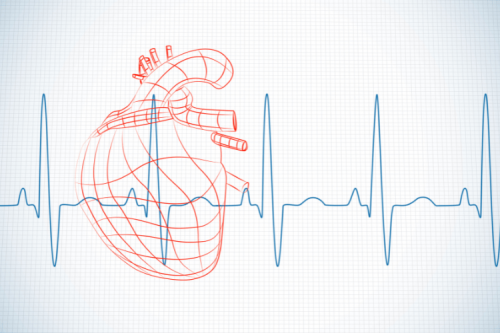
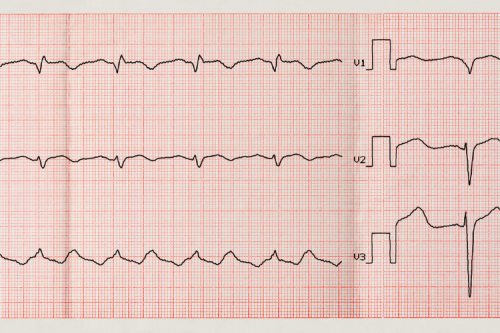

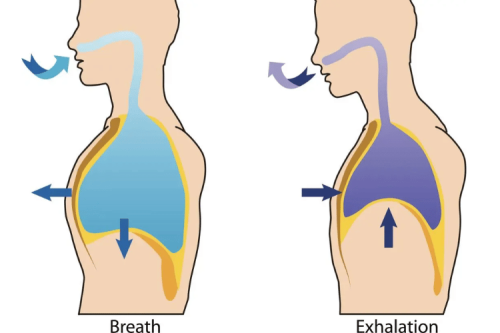

 Login with Google
Login with Google Login with Facebook
Login with Facebook